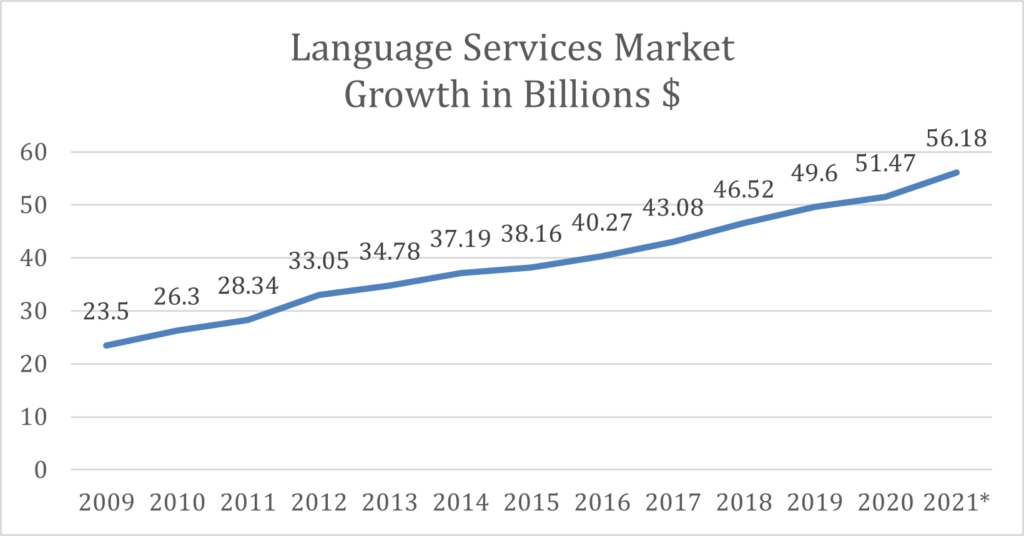The world of language services is evolving at a dizzying pace, not only are new technologies being created every day, but improvements in existing technologies are being made at an equal pace. These developments impact translation consumers and Language Service Providers (LSP) in vastly different ways. Many consumers of language services are content with the “throw it over the fence and get it back” approach, and they are not too interested in how it happens, so for them the impact will be virtually unseen. More localization mature consumers may rely on their LSP to help them negotiate the evolving landscape. Finally, the LSPs will obviously feel the biggest impact on their business since this goes to the very heart of their product and how they do business. So the question is how can the consumers make certain that they will be able to benefit from these technologies, and if they should consider moving to a more agile model.
What is translation technology?
To most people not involved in the language services industry, translation technology is a rather mundane concept that makes them think of Machine Translation, and that indeed would be one part of the equation. However, it is important to note that the translation industry has experienced amazing growth and has in fact doubled in size over the past decade.
As with any other service there are efforts to use technology to create efficiencies and drive down costs. These technologies have taken the form of Computer Assisted Translation (CAT) tools, which utilize translation memory (TM), technology to speed up translation as well as increase reusability of previously translated material, terminology tools which increase quality, workflow automation tools, as well as providing platforms for Translation Management and integrations with different environments.
Vendor Lock…works both ways
Any LSP would like to become valuable enough to its customers that it can get to a position that it has locked in the client, which is not actually a bad thing, even for the customer, after all if the service is good, why not continue with that relationship?
On the other hand, vendor lock works also for technology vendors and their customers; the LSPs. With the rate of progress in the industry LSPs are struggling to match their customers with the optimal solutions for them, and often the customer gets exactly what the LSP wants it to have, simply because any other solution would be expensive, or not fit the LSP’s core infrastructure, after all, the LSP makes the bulk of its revenue off of word count so its interest is really only in getting the words translated, and not increase efficiencies for their client.
Three tips for getting the most out of your LSP
There are a few things that you can do to get more out of your LSP.
1. The most important thing that you can do is to understand what you are doing. Like most companies that translate, you are probably only one of many users within your company, and you all may be working with a couple of different vendors for any number of reasons. If this is the case it would be advisable for you to coordinate the language assets, this means primarily the terminology and the translation memories, unless you do it, or your vendor proactively manages it on your behalf, it is NOT getting done, and these are valuable resources.
2. Understand how you and other groups are interfacing with your LSP. So many customers are still sending files back and forth, and when they ask their LSP for solutions the LSP winds up giving them a ready-made solution. That solution may not really be what the client needs, but because it seems to make sense, they will dive right in and build their workflow around the platform, which itself is often from a third party. Once you understand how the groups are interfacing with the LSP, you should then ask them how they would envision their process, and here you need to emphasize that almost anything is possible. Find out what bothers them, or what might potentially bother them while emphasizing that they look holistically at what they are doing.
3. Engage with someone outside of the organization, of course, this would exclude your vendor. You need to have someone look at your organization and its needs in order to suggest a course of action based on objective criteria. Choosing someone within the industry is a great idea, as long as they have the experience with translation consumers and a good knowledge of the language technology landscape.
The language industry is evolving at a dizzying speed, if you haven’t changed anything that you are doing in the past three years, have not been able to cut unit costs or improve time to market, then you need to look at how you are working and create a plan to move to a more up to date process. It is important that your organization benefit from the rapid developments in the language industry in order to stay competitive.
Feel free to contact me to discuss how you can improve on your process
About the author
David Sommer co-founder of LangSouls, has nearly two decades experience in the translation and localization industry and has filled multiple roles with Language Service Providers in operations and business development. David’s perspective, experience and his intimate knowledge of the processes involved in effective localization, make him uniquely qualified to help organizations navigate the localization landscape.






